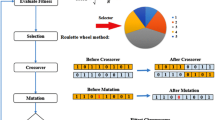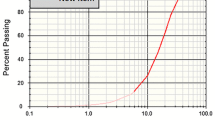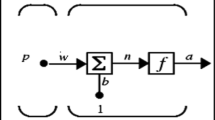Abstract
In the surface and underground mines as well as civil projects, the blasting operation is widely performed for rock breakage. Flyrock is considered as an undesirable environmental impact induced by blasting. Hence, precise prediction of flyrock is a necessary work for safety issue. This research is carried out to evaluate the acceptability of imperialist competitive algorithm (ICA) to approximate the blast-induced flyrock with respect to input parameters including burden, spacing, stemming, weight charge and rock mass rating. In total, 78 blasting operation were investigated and the mentioned parameters, as well as the flyrock values, were measured. In this research work, three ICA-based models, i.e., linear, power, and quadratic models, are introduced. The artificial neural network (ANN) has also been developed by the same data sets and the same input parameters which we used in ICA. The results of the predictors are then evaluated using statistical indicators such as coefficient of determination (R2). Finally, it was proved that the ICA–linear yields a better prediction in comparison with three other models, so that R2 was obtained as 0.954, while the amount of R2 for the ICA–power form, ICA–quadratic form, and ANN models were 0.928, 0.952, and 0.841, respectively.









Similar content being viewed by others
References
Singh TN, Verma AK (2010) Sensitivity of total charge and maximum charge per delay on ground vibration. Geomat Nat Hazards Risk 1(3):259–272
Verma AK, Singh TN (2011) Intelligent systems for ground vibration measurement: a comparative study. Eng Comput 27(3):225–233
Trivedi R, Singh TN, Raina AK (2014) Prediction of blast induced flyrock in Indian limestone mines using neural networks. J Rock Mech Geotech Eng 6:447–454
Trivedi R, Singh TN, Raina AK (2016) Simultaneous prediction of blast-induced flyrock and fragmentation in opencast limestone mines using back propagation neural network. Int J Min Miner Eng 7(3):237–252
Ghasemi E, Sari M, Ataei M (2012) Development of an empirical model for predicting the effects of controllable blasting parameters on flyrock distance in surface mines. Int J Rock Mech Min Sci 52:163–170
Khandelwal M, Monjezi M (2013) Prediction of flyrock in open pit blasting operation using machine learning method. Int J Rock Mech Min Sci 23:313–316
Little TN, Blair DP (2010) Mechanistic Monte Carlo models for analysis of flyrock risk. Rock fragmentation by blasting. Taylor and Francis, London, pp 641–647
Monjezi M, Khoshalan HA, Varjani AY (2012) Prediction of flyrock and backbreak in open pit blasting operation: a neurogenetic approach. Arab J Geosci 5:441–448
Marto A, Hajihassani M, Jahed Armaghani D, Tonnizam Mohamad E, Makhtar AM (2014) A novel approach for blastinduced flyrock prediction based on imperialist competitive algorithm and artificial neural network. Sci World J 2014(5):643715
Jahed Armaghani D, Hajihassani M, Mohamad ET, Marto A, Noorani SA (2014) Blasting-induced flyrock and ground vibration prediction through an expert artificial neural network based on particle swarm optimization. Arab J Geosci 7:5383–5396
Lundborg N, Persson N, Ladegaard-Pedersen A, Holmberg R (1975) Keeping the lid on flyrock in open pit blasting. Eng Min J 176:95–100
Roth JA (1979) A model for the determination of flyrock range as a function of shot condition. US Department of Commerce. NTIS report no. PB81222358
Gupta RN (1980) Surface blasting and its impact on environment. In: Trivedy NJ, Singh BP (eds) Impact of mining on environment. Ashish Publishing House, New Delhi, pp 23–24
Hasanipanah M, Jahed Armaghani D, Khamesi H, Bakhshandeh Amnieh H, Ghoraba S (2016) Several non-linear models in estimating air-overpressure resulting from mine blasting. Eng Comput 32(3):441–455. https://doi.org/10.1007/s00366-015-0425-y
Hasanipanah M, Naderi R, Kashir J, Noorani SA, Zeynali Aaq Qaleh A (2016) Prediction of blast produced ground vibration using particle swarm optimization. Eng Comput. https://doi.org/10.1007/s00366-016-0462-1
Taheri K, Hasanipanah M, Bagheri Golzar S, Abd Majid MZ (2016) A hybrid artificial bee colony algorithm-artificial neural network for forecasting the blast-produced ground vibration. Eng Comput. https://doi.org/10.1007/s00366-016-0497-3
Hasanipanah M, Shahnazar A, Bakhshandeh Amnieh H, Jahed Armaghani D (2016) Prediction of air-overpressure caused by mine blasting using a new hybrid PSO–SVR model. Eng Comput. https://doi.org/10.1007/s00366-016-0453-2
Hasanipanah M et al (2016) Prediction of an environmental issue of mine blasting: an imperialistic competitive algorithm-based fuzzy system. Int J Environ Sci Technol. https://doi.org/10.1007/s13762-017-1395-y
Guan X, Liao S, Bai J, Wang F, Li Z, Wen Q, He J, Chen T (2017) urban land-use classification by combining high-resolution optical and long-wave infrared images. Geospat Inf Sci 20(4):299–308
Hasanipanah M, Shahnazar A, Arab H, Bagheri Golzar S, Amiri M (2017) Developing a new hybrid-AI model to predict blast-induced backbreak. Eng Comput 33(3):349–359
Zhao B, Gao L, Liao W, Zhang B (2017) A new kernel method for hyperspectral image feature extraction. Geospat Inf Sci 20(4):309–318
Tracewski L, Bastin L, Fonte CC (2017) Repurposing a deep learning network to filter and classify volunteered photographs for land cover and land use characterization. Geospat Inf Sci 20(3):252–268
Li M, Jiang R, Sam Ge S, Heng Lee T (2018) Role playing learning for socially concomitant mobile robot navigation. CAAI Trans Intell Technol 3(1):49–58
Ma J, Jiang X, Gong M (2018) Two-phase clustering algorithm with density exploring distance measure. CAAI Trans Intell Technol 3(1):59 – 64
Amini H, Gholami R, Monjezi M, Torabi SR, Zadhesh J (2011) Evaluation of flyrock phenomenon due to blasting operation by support vector machine. Neural Comput Appl. https://doi.org/10.1007/s00521-011-0631-5
Ghasemi E, Amini H, Ataei M, Khalokakaei R (2014) Application of artificial intelligence techniques for predicting the flyrock distance caused by blasting operation. Arab J Geosci 7:193–202
Trivedi R, Singh TN, Gupta NI (2015) Prediction of blast induced flyrock in opencast mines using ANN and ANFIS. Geotech Geol Eng 33:875–891
Atashpaz-Gargari E, Lucas C (2007) Imperialist competitive algorithm: an algorithm for optimization inspired by imperialistic competition. In: IEEE congress on evolutionary computation, Singapore, pp 4661–4667. https://doi.org/10.1109/CEC.2007.4425083
Emami H, Derakhshan F (2015) Integrating fuzzy K-means, particle swarm optimization, and imperialist competitive algorithm for data clustering. Arab J Sci Eng. https://doi.org/10.1007/s13369-015-1826-3
Jahed Armaghani D, Hasanipanah M, Tonnizam Mohamad E (2016) A combination of the ICA-ANN model to predict air overpressure resulting from blasting. Eng Comput 32(1):155–171
Niknam T, Taherian Fard E, Ehrampoosh S, Rousta1 A (2011) A new hybrid imperialist competitive algorithm on data clustering. Sadhana 36(3):293–315
Ahmadi MA (2011) Prediction of asphaltene precipitation using artificial neural network optimized by imperialist competitive algorithm. J Petrol Explor Prod Technol 1:99–106
Banisadr AH, Zandieh M, Mahdavi I (2013) A hybrid imperialist competitive algorithm for single-machine scheduling problem with linear earliness and quadratic tardiness penalties. Int J Adv Manuf Technol 65:981–989
Yazdipour A, Ghaderi MR (2014) Optimization of weld bead geometry in GTAWof CP titanium using imperialist competitive algorithm. Int J Adv Manuf Technol. https://doi.org/10.1007/s00170-014-5682-1
Mikaeil R, Shaffiee Haghshenas S, Shaffiee Haghshenas S, Ataei M (2016) Performance prediction of circular saw machine using imperialist competitive algorithm and fuzzy clustering technique. Neural Comput Appl. https://doi.org/10.1007/s00521-016-2557-4
Maleki HR, Khanduzi R, Akbari R (2016) A novel hybrid algorithm for solving continuous single-objective defensive location problem. Neural Comput Appl. https://doi.org/10.1007/s00521-016-2254-3
Hajihassani M, Jahed Armaghani D, Marto A, Tonnizam Mohamad E (2014) Ground vibration prediction in quarry blasting through an artificial neural network optimized by imperialist competitive algorithm. Eng Geol Environ Bull. https://doi.org/10.1007/s10064-014-0657-x
Taghavifar H, Mardani A, Taghavifar L (2013) A hybridized artificial neural network and imperialist competitive algorithm optimization approach for prediction of soil compaction in soil bin facility. Measurement 46(8):2288–2299
Zadeh Shirazi A, Mohammadi Z (2016) A hybrid intelligent model combining ANN and imperialist competitive algorithm for prediction of corrosion rate in 3C steel under seawater environment. Neural Comput Appl. https://doi.org/10.1007/s00521-016-2251-6
Akhtarpour A, Khodaii A (2014) A study of the seismic response of asphaltic concrete used as a core in rockfill dams. J Seismol Earthq Eng 16(3):169–184
Ahmadi MA, Ebadi M, Shokrollahi A, Majidi SMJ (2013) Evolving artificial neural network and imperialist competitive algorithm for prediction oil flow rate of the reservoir. Appl Soft Comput 13(2):1085–1098
Hasanipanah M, Shirani Faradonbeh R, Bakhshandeh Amnieh H, Jahed Armaghani D, Monjezi M (2016) Forecasting blastinduced ground vibration developing a CART model. Eng Comput 33(2):307–316. https://doi.org/10.1007/s00366-016-0475-9
Hasanipanah M, Bakhshandeh Amnieh H, Arab H, Zamzam MS (2016) Feasibility of PSO–ANFIS model to estimate rock fragmentation produced by mine blasting. Neural Comput Appl. https://doi.org/10.1007/s00521-016-2746-1
Jahed Armaghani D, Hasanipanah M, Bakhshandeh Amnieh H, Tonnizam Mohamad E (2016) Feasibility of ICA in approximating ground vibration resulting from mine blasting. Neural Comput Appl. https://doi.org/10.1007/s00521-016-2577-0
Hasanipanah M, Shirani Faradonbeh R, Jahed Armaghani D, Bakhshandeh Amnieh H, Khandelwal M (2017) Development of a precise model for prediction of blast-induced flyrock using regression tree technique. Environ Earth Sci 76(1):27
Yang Y, Zhang Q (1997) A hierarchical analysis for rock engineering using artificial neural networks. J Rock Mech Rock Eng 30:207–222
Acknowledgements
This work was financially supported by the National Key Research and Development Plan (no. 2016YFC0501103), National Natural Science Foundation of China (no. 51774271), National Natural Science Foundation of China (No. 51674245), Natural Science Foundation of Jiangsu Province (no. BK20160259), Priority Academic Program Development of Jiangsu Higher Education Institutions (no. PAPD), and the Fundamental Research Funds for the Central Universities (no. 2014XT01). Thanks to Emate (http://www.emate.ac.cn) for their excellent language service. Thanks to IAMSET for research suggestions. In addition, the authors really appreciate Dr. Mahdi Hasanipanah and Mr. Ali Taherian who allowed us to use his data.
Author information
Authors and Affiliations
Corresponding author
Additional information
Publisher’s Note
Springer Nature remains neutral with regard to jurisdictional claims in published maps and institutional affiliations.
Rights and permissions
About this article
Cite this article
Wu, M., Cai, Q. & Shang, T. Assessing the suitability of imperialist competitive algorithm for the predicting aims: an engineering case. Engineering with Computers 35, 627–636 (2019). https://doi.org/10.1007/s00366-018-0621-7
Received:
Accepted:
Published:
Issue Date:
DOI: https://doi.org/10.1007/s00366-018-0621-7




